REVIEW: Visalys Temp from Kettenbach LP offers excellent fit at the margins, fewer voids and more
The Catapult Group evaluates a strong entry in the temporization category.
The Catapult Group evaluates a strong entry in the temporization category.
Kettenbach’s commitment to developing high-quality crown and bridge technique materials has been re-affirmed with the addition of their new provisional material, Visalys Temp. With many major players in the temporary materials market, only a select few have emerged as having the combination of qualities that most practitioners require for confidence in provisionalization.
In their quest to confirm that Visalys Temp would meet or exceed practitioners’ expectations, Kettenbach requested that the material be evaluated by the Catapult Group, an organization of key opinion leaders (KOLs) and teaching practitioners spanning the entire U.S. and Canada, of which I am a member. There is no financial compensation to the dentists evaluating the product, and the end result is an honest, unbiased assessment, based on the clinical experiences of many.
Material description
Visalys Temp is a two-component, self-cured, multifunctional acrylic composite, suitable for the fabrication of temporary crowns, partial crowns, bridges, inlays, onlays and veneers. While there are many in this category, Visalys immediately stands out because of the absence of Bisphenol-A or Bisphenol -A precursors in the chemistry. Shades available include A1 through A3.5, B1 and Bleach shade.
Clinical application
There are several critical components that must be considered when evaluating a provisional material. These include ease of use, set and working time, fit, durability and polishability/esthetics. In my office, I handled the material as well as our expanded duty dental assistants to facilitate a dialogue on efficacy and applicability. Our first provisional was a single unit molar that was prepared for a full contour zirconia crown.
As with most of our provisionals, an additional silicone matrix was made prior to tooth preparation. Dispensing was easy, and the material was clearly set by the one minute and twenty second set time as shown in the directions for use (DFU).
Upon removal from the mouth and matrix, the provisional was gently wiped with alcohol to remove the oxygen inhibited layer. At the end of this time, two minutes had passed and, per the DFU, the material would complete final curing from 2:20 min:sec until 4:00 min:sec. By the time we had wiped the restoration with alcohol, it was notably hard, and we immediately began to trim the temporary.
Handpiece trimming and polishing was quite efficient (more so than with our current material), facilitated by the early hardness of the material. The temporary fit beautifully and contained no voids, so it was cemented to place with Temp-Bond clear. The results from our next 15 units (singles and multiples) yielded similar results. We did come to realize that setting times were indeed shorter than listed in the DFU. We removed all temps from the mouth within one minute and began trimming all after removal and alcohol wiping (about two minutes).
Trimming and polishing remained consistently simple and the esthetic zone temporaries were extremely appealing. We experienced no adverse occurrences, such as fracture, or shade instability, and all agreed the material exceeded our current provisional material in virtually every category.
Catapult evaluation
Having placed more than 250 provisional restorations with Visalys, the Catapult KOLs as a group were also quite impressed, with nearly half of all evaluators rating the material as better than what they were currently using. When asked if they would switch their current product assuming a similar price, 78 percent of the group answered in the affirmative.
Finally, 90 percent of all evaluators said they would have no reservations in recommending this product to their peers. These are all astounding numbers, considering the many material choices available and the ability for these KOLs to test many of them.
While all of the material’s qualities were evaluated, those most commonly mentioned by the practitioners referred to the excellent fit at the margins, fewer voids, faster set-time (time-saving), hardness, ease of trimming, polishability and handling. The consensus of the group was that being BPA-free was a distinct advantage for Visalys Temp, but it was merely the “icing on the cake” for a material that otherwise had superior characteristics in its category.
With any clinical evaluation there are always suggestions for improvement, though for this material they were few. The group felt that perhaps the working /set times should be shortened slightly in the DFU to prevent the possibility of early set and locking undercuts for a new user. There may also be an opportunity for Kettenbach to incorporate a slightly smaller mixing tip.
Short of this, Kettenbach has set themselves apart from the competition with Visalys Temp. The physical characteristics of this provisionalization system make it ideal for short- and long-term use.
Clinical case
A 69-year-old male presented for emergency care with a fractured mandibular first pre-molar (No. 21) (Fig. 1).
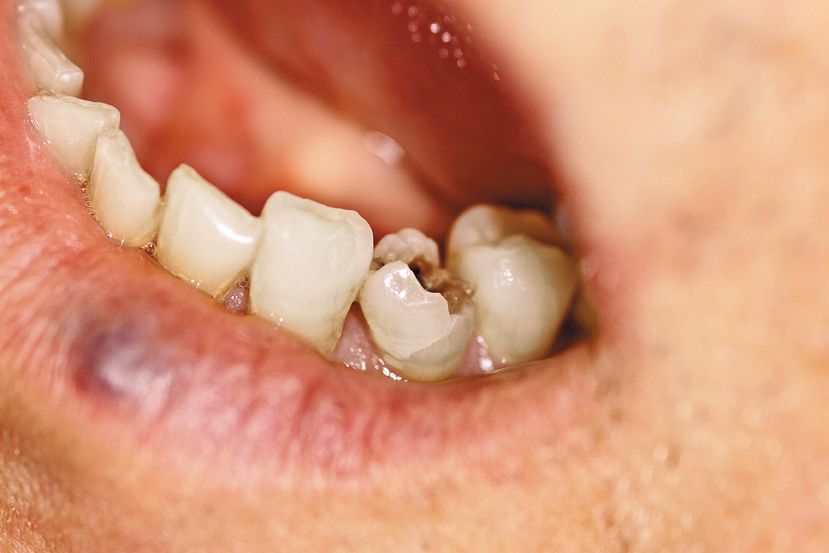
Figure 1
The tooth had been endodontically treated years prior, but never adequately restored. A core build-up and single unit e.max crown from Ivoclar Vivadent was planned with a Visalys Temp provisional restoration. Prior to preparation, composite was added to the fractured tooth to restore form for the addition silicone temporary matrix (Figs. 2-3).

Figure 2
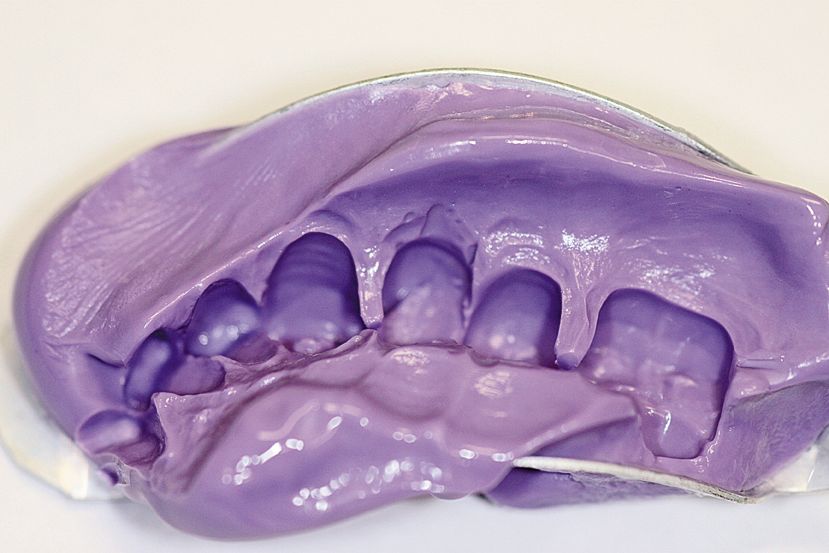
Figure 3
Once preparation and impressioning were complete, a provisional crown was fabricated using Visalys Temp. Prior to placing the new mixing tip on the Visalys cartridge, a small amount was extruded to ensure even flow of the two cartridge chambers (Fig. 4).
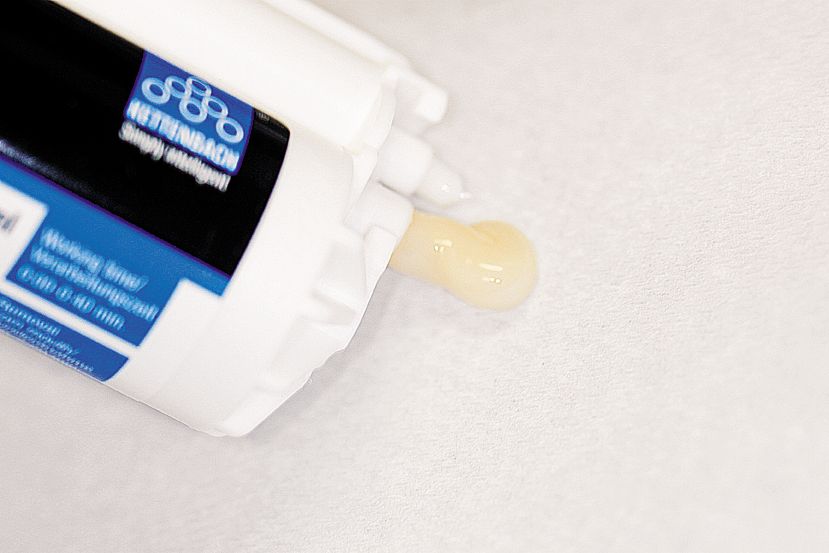
Figure 4
The mixing tip was placed in on position, and the viscosity of the material easily filled the unprepared matrix. The matrix was carried to the mouth and removed in less than one minute. With a plastic instrument, the temporary crown was immediately removed from the matrix and wiped gently with an alcohol wipe (Fig. 5) to remove the oxygen inhibited layer. Shaping and polishing was immediately begun with a handpiece at approximately the two minute mark (Fig. 6).
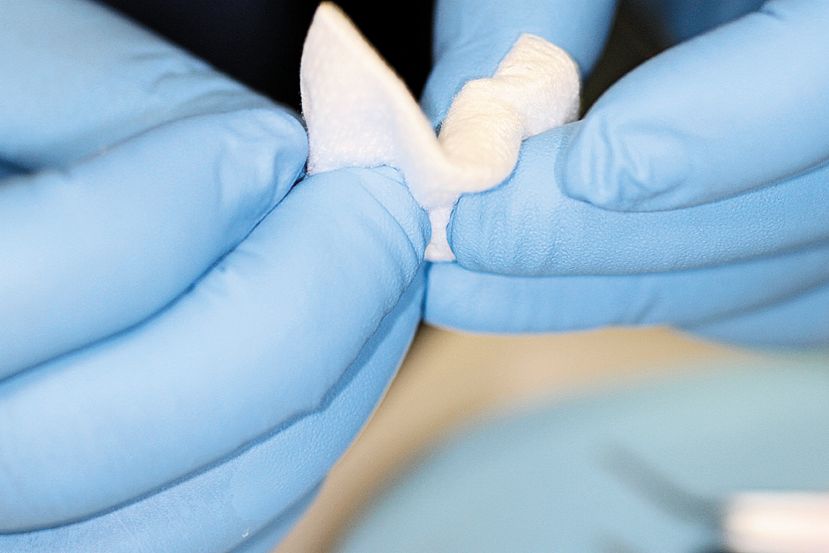
Figure 5

Figure 6
By the five minute mark the restoration was seated with a provisional non-eugenol cement. Final occlusal adjustments and polishing were accomplished intraorally with a fine diamond and brownie point at low RPM (Fig. 7).

Figure 7
Visalys Temp was easy to work with, easy to shape and polish, and made for a durable temporary prosthesis. During the evaluation, shades were limited but the final esthetic results were still remarkable.
VISALYS TEMP
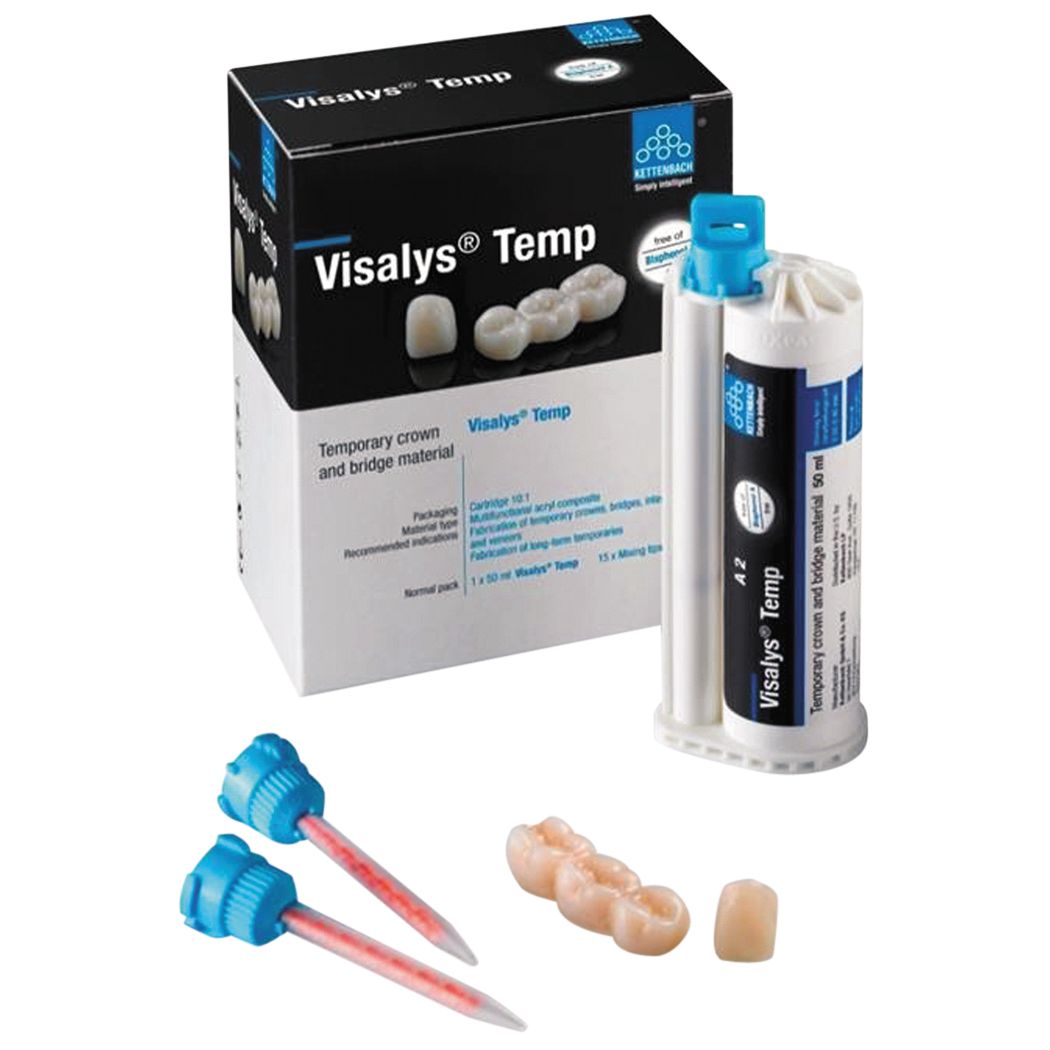
Visalys® Temp from Kettenbach LP is said to create demonstrably stronger temporaries that are esthetic, more fracture-resistant and manufactured without BPA. Visalys® Temp is a two-component BPA-free resin based on a multifunctional acrylic composite. It can be used to make temporary crowns, partial crowns, bridges, inlays, onlays and veneers including long-term provisionals.
877-532-2123
ACTIVA BioACTIVE Bulk Flow Marks Pulpdent’s First Major Product Release in 4 Years
December 12th 2024Next-generation bulk-fill dental restorative raises the standard of care for bulk-fill procedures by providing natural remineralization support, while also overcoming current bulk-fill limitations.

















